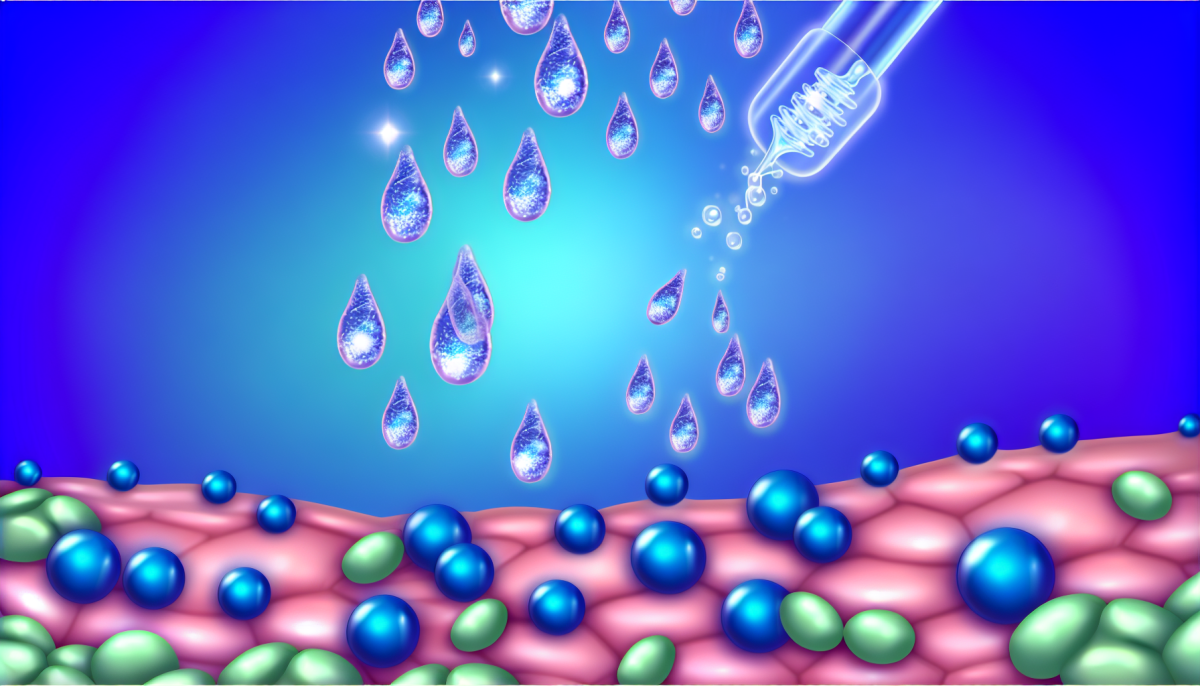Introduction to Hyaluronic Acid
Hyaluronic Acid, often HA, is a naturally occurring substance in our skin that holds water and helps keep it hydrated and plump. The HA within our bodies has a thousand times its weight in water to retain all that moisture in our skin and joints and prevent it from evaporating into the air. In skincare, Hyaluronic Acid is lauded for its ability to hydrate and plump the skin, reducing the appearance of fine lines and wrinkles. It comes in several forms, most commonly in serums and creams, and is considered a staple in many skincare routines for its wide range of benefits.
The Role of Hyaluronic Acid in Skin Hydration
Hyaluronic Acid plays a crucial role in skin hydration due to its exceptional ability to bind and retain water molecules. When applied to the skin, it acts like a sponge, absorbing moisture from the surrounding environment and trapping it within the skin layers. This provides immediate hydration and continuously replenishes moisture throughout the day. Moreover, by holding onto the water, Hyaluronic Acid creates a plumping effect, helping the skin to appear more hydrated, radiant, and youthful.
How Hyaluronic Acid Aids in Skin Plumping
Analysis of the Mechanism by which Hyaluronic Acid Improves Skin Fullness
Hyaluronic Acid attracts moisture from the surrounding environment and retains it within the skin's layers. This action leads to an increase in skin volume, thereby improving skin fullness. Hydration also smoothes the skin's surface, giving it a more plump look.
When applied externally, Hyaluronic Acid penetrates the skin and binds water to skin cells, infusing all layers of the skin with valuable, rejuvenating moisture. This process helps to restore the skin's natural barrier, promoting better skin health and resilience against external factors.
Furthermore, Hyaluronic Acid has a unique capacity in that it can adjust its moisture absorption rate depending on the humidity of the environment—relative to the season and the climate—making it a beneficial ingredient for all skin types and environments.
Hyaluronic Acid also plays a crucial role in the skin's ability to repair itself, maintaining skin elasticity and hydration, which helps to prevent the development of wrinkles and fills in already present wrinkles to reduce their appearance. This is why Hyaluronic Acid is a crucial ingredient in many anti-ageing skincare products.
Benefits of Hyaluronic Acid for the Skin
- Hyaluronic Acid is famed for its unparalleled hydrating abilities. It can hold up to 1,000 times its weight in water, delivering intensive hydration to the skin.
- It aids skin plumping by increasing skin volume, thereby improving skin fullness. This hydration also smoothes the skin's surface, giving it a more plump look.
- It aids in wound healing and plays a crucial role in the skin's ability to repair itself.
- Hyaluronic Acid can help reduce wrinkles. It maintains skin elasticity and hydration, which helps to prevent the development of wrinkles and fills in already present wrinkles to reduce their appearance.
- It's suitable for all skin types. Whether your skin is dry, oily, or somewhere in between, Hyaluronic Acid can deliver the right amount of hydration without feeling heavy or greasy.
- It helps protect the skin. By keeping the skin properly hydrated, Hyaluronic Acid can also help maintain the skin's natural barrier function, keeping irritants out and locking moisture in.
- Adjusts its moisture absorption rate depending on the climate—making it a beneficial ingredient for all environments.
Different Forms of Hyaluronic Acid
Comparison of Hyaluronic Acid Forms: Serums vs. Creams
Hyaluronic Acid is available in various skincare products, but serums and creams are the most commonly used forms.
Hyaluronic Acid serums are lightweight, quickly absorbed into the skin, and typically contain a higher concentration. They are designed to deliver a potent dose of hydration and can be used before applying other skincare products to help lock in moisture.
On the other hand, hyaluronic acid creams have a thicker texture and are typically used as moisturizers. Although they may have a lower concentration of hyaluronic Acid than serums, their richer formulation provides a protective barrier that helps seal in the hydration the hyaluronic Acid provides.
Both forms are effective for delivering Hyaluronic Acid's skin-hydrating benefits, but the choice will depend on an individual's skin type and preference.
How to Incorporate Hyaluronic Acid into a Skincare Routine
Here is a step-by-step guide on when and how to apply Hyaluronic Acid and how to combine it with other skincare products for maximum benefit:
- Start by cleansing your face with your regular face wash. This ensures that your skin is clean and ready for the skincare products.
- Apply a toner if you use one. The toner helps to balance your skin's pH levels, preparing it for better absorption of other products.
- Now it's time to apply your Hyaluronic Acid serum. Please take a few drops of the serum and gently massage it into your skin. Make sure to cover all areas of your face.
- Wait for a couple of minutes to allow the serum to absorb into your skin thoroughly.
- If you have other serums to apply, you can do so now. Remember to use your serums in order of consistency - start with the thinnest and finish with the thickest.
- Once your serums have absorbed, apply your moisturizer to help seal in the hydration.
- Finish your morning routine with sunscreen to protect your skin from the sun's harmful rays.
Please note: Hyaluronic Acid can be used twice daily, in the morning and evening. However, if you're new to this ingredient, use it once a day to see how your skin reacts.
Potential Side Effects of Hyaluronic Acid
Although Hyaluronic Acid is generally considered safe for all skin types, as with any skincare product, it can cause adverse reactions in some individuals. The most common side effects are skin irritation and redness, especially in people with sensitive skin. In rare cases, some people may experience allergic reactions such as rash, itching, or swelling. If you have sensitive skin or allergies, performing a patch test before incorporating Hyaluronic Acid into your skincare routine is recommended. Apply a small amount of the product to a discreet area of skin, such as the inside of your wrist or behind your ear, and wait 24 hours. If no reaction occurs, it's likely safe to use the product. If you experience any unusual or persistent reactions after using hyaluronic Acid, discontinue using it and consult a dermatologist.
Conclusion: The Importance of Hyaluronic Acid for Skin Health
Hyaluronic Acid is an essential ingredient in skincare for several reasons. First, its unique ability to retain a significant amount of water makes it a powerful hydrator, keeping the skin moisturized and healthy. Second, attracting and holding onto water helps to plump the skin, reducing the appearance of fine lines and wrinkles and giving a youthful, entire appearance. Lastly, it's versatile and suitable for all skin types, making it an accessible ingredient. One can maintain good skin health, hydration, and fullness by incorporating Hyaluronic Acid into a skincare routine.



